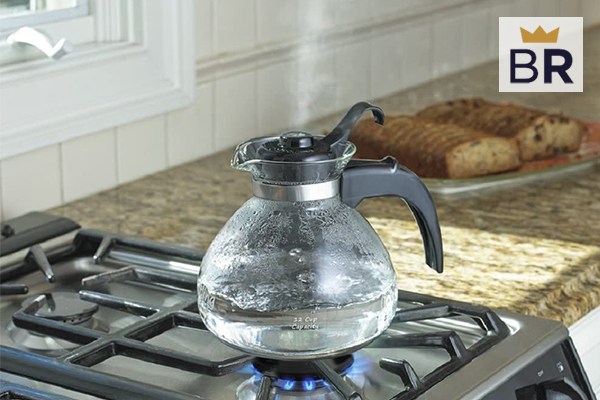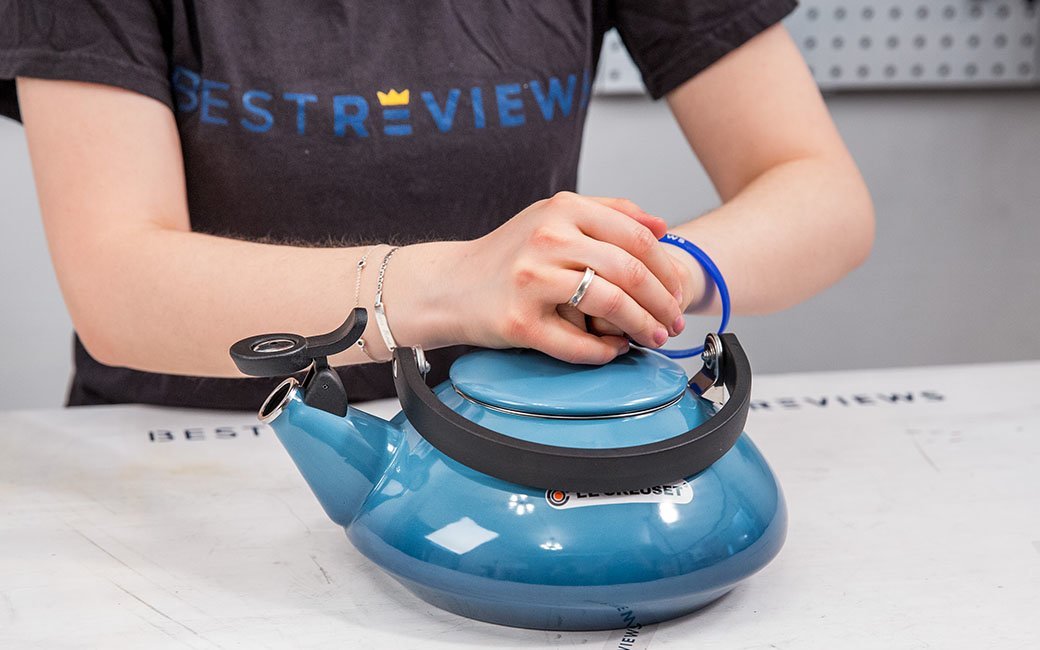Buying guide for best tea kettles
Ah, a delicious cup of tea! What an invigorating way to start your day, add a little pick-me-up to your lunch break, or wind down before bed. While there are thousands of varieties of tea to choose from, the perfect cup always starts with the same thing: hot water.
Getting that water hot is the job of the tea kettle. Though they are relatively simple devices, you’ll find quite a few different versions on the market, making the choice a bit more complicated than you might like.
EXPERT CONSULTANT
Nina is a longtime gourmet chef, interior designer/decorator, and events planner. She has accomplished all of this in addition to maintaining a stellar career as a healthcare executive, where she helps alter the course of people’s lives via preventive care and healthy living. Nina’s hobbies include learning new recipes, planning and executing amazing dinners to impress local chefs, and hiking around the world.
Nina
Gourmet Chef, Health Care Executive
Tea kettle vs. teapot
While the terms might sometimes be used interchangeably, a tea kettle is not the same thing as a teapot.
Tea kettles boil water that will be used to brew tea. A tea kettle must be able to withstand considerable heat; stovetop kettles sit directly over the flame, while electric tea kettles heat up from within.
While tea kettles can be very attractive, most are fairly utilitarian in design. You’ll find stovetop tea kettles made from glass and heavy ceramic, but the majority are made of metal.
Did you know?
Your tea kettle isn’t just for heating tea water. You can also use it to heat water for coffee, hot chocolate, or recipes calling for boiling water.
STAFF
BestReviews
A teapot is not used to boil water. Rather, it is a place where hot water and tea leaves steep until the tea is ready to drink. Since teapots don’t have to withstand the direct heat of an open flame, they are typically made of more delicate materials than tea kettles, such as porcelain or ceramic.
Teapots are often very decorative. In fact, some are purely for decoration, not for use. You can find teapots in a huge range of shapes, designs, and colors, making them very popular collectibles.
So if you want a vessel for boiling water, a tea kettle is what you need. If you just want a pretty pot in which to steep your tea, choose a teapot.
Stovetop tea kettles vs. electric tea kettles
There are two basic types of tea kettles: stovetop tea kettles and electric tea kettles.
Stovetop tea kettles
Stovetop tea kettles are the familiar-looking spouted pots used to boil water over a stove burner or campfire. Most hold between one and two quarts of water. The four most common materials used to make stovetop tea kettles are anodized aluminum, stainless steel, glass, and copper.
-
Anodized aluminum is lightweight and transfers heat well, meaning your water will reach a boil quickly. It resists scratching and staining, so your tea kettle will look good for many years. On the downside, anodized aluminum can be a bit pricey.
-
Stainless steel is the most popular metal used for tea kettles. It takes longer to heat than other metals but is easy to clean, durable, inexpensive, and attractive. You’ll sometimes find stainless steel tea kettles with a colorful outer ceramic coating, but these are more expensive than their plainer counterparts.
-
Glass tea kettles let you watch your water boil and are very attractive. You need to be careful with glass tea kettles, however; they must be heated slowly, are best protected from the direct flame with a metal trivet, and are prone to breaks or chips if handled roughly.
-
Copper tea kettles are beautiful, but that beauty comes paired with a steep price. Copper heats quickly and evenly, but it’s a soft metal that is easily scratched or dented. Copper is also prone to tarnishing.
"If you’re using loose tea leaves, a rough guideline is one teaspoon of loose tea for each cup of water, plus one extra “for the pot.” If using tea bags, steep one bag per cup."
STAFF
BestReviews
Regardless of the kettle’s material, it should have a heat-resistant handle that protects your hand from burns when you lift it or pour water. Silicone handles work well for this purpose, but wood and hard plastic are also popular options.
One feature that is common to most stovetop kettles is a whistle. This simple device creates a whistling sound that grows louder the longer the water is left boiling. The sound is meant to alert you that it’s time to turn off the flame and pour the water either into your teapot or into a mug.
Most tea kettle whistles have a similar sound, but some are a bit more musical than others. Or, if you prefer silence, you can find some tea kettles with no whistle at all.
Expert Tip
Take care not to overfill your tea kettle. If you fill it more than two-thirds full, boiling water might bubble out of the spout, around the lid, or through the whistle.
STAFF
BestReviews
Electric tea kettles
Electric tea kettles usually look like tall tea kettles or old-school coffee percolators. They have an internal heater that quickly and efficiently brings water to a boil. In fact, electric tea kettles are more energy-efficient than stovetop tea kettles.
There are two basic types of electric tea kettles: corded and cordless. Corded electric tea kettles plug directly into a nearby electrical outlet. Cordless electric tea kettles aren’t entirely cordless; rather, they have a heating base that plugs into an outlet with the kettle sitting on top. That means you can easily carry the kettle to the kitchen table, the backyard breakfast, or wherever else you want to enjoy a cup of tea.
As with stovetop kettles, you’ll find electric tea kettles made of several different materials, most commonly stainless steel, glass, and plastic. Although plastic tea kettles are the least expensive, many tea aficionados scorn them, as they feel the plastic can impart a slightly “off” taste to the water.
Durability is an important consideration when choosing a tea kettle, as a model that’s sturdy enough to withstand everyday use should last for years. We scrutinize how well-made a kettle is before recommending it.
Size is a feature we consider when analyzing tea kettles. Small and large models are available, and the best choice depends on how many cups of tea you typically brew at once.
We find out whether the handles of each tea kettle on our research list stay cool to the touch during use.
Glass, copper, stainless steel, and anodized aluminum are the most popular materials used to make tea kettles. Additionally, some electric models are made of plastic. We assess each type in our research, noting their pros and cons.
Most kettles whistle or beep when boiling water is ready for tea. We examine this feature to determine if it’s practical or annoyingly loud.
We want to know if a tea kettle is easy to clean. Is it dishwasher safe, or must it be washed by hand?
Electric tea kettles are either corded or cordless. We provide details about how each type works to help our readers stay informed.
In our research, we explore the positive and negative aspects of both stovetop and electric tea kettles.
While kettles are made for high cooking temperatures and boiling water, teapots are designed to steep and serve tea. We take these differences into account in our research process.
When we assess electric tea kettles, we look for user-friendly features such as auto shutoff, a warming function, and temperature control. These features are convenient to have when preparing tea and other hot beverages.
Desirable electric tea kettle features
Although electric tea kettles aren’t complicated devices, they do offer far more features than stovetop kettles do. Some of the most common electric tea kettle features to consider include the following.
Temperature control
Many electric tea kettles allow you to select the appropriate temperature for the type of tea – or coffee – you plan to brew.
Ready signal
A beep or whistle lets you know that your water has reached a boil.
For your safety
Clean your tea kettle periodically by boiling a mixture of water and white vinegar, then rinsing the kettle thoroughly. This removes buildup from salts and minerals in the water.
STAFF
BestReviews
Automatic shut-off
This safety features turns the kettle off if it boils empty or is left on for too long.
Size
Small electric tea kettles only boil enough water for a few cups of tea, while larger kettles hold enough water for eight or more cups.
Expert Tip
You can control the strength of your tea by steeping it for a shorter or longer period of time, but don’t overdo it unless you want bitter tea.
STAFF
BestReviews
Warm option
This handy feature keeps your water warm, but not at a boil, allowing you to pour more water if you decide you want another cup. Depending on the model, the warm option works for 20 minutes to an hour.
Stay-cool handle
Your tea kettle shouldn’t burn your hand. A stay-cool handle protects your skin from the heat.
"Whatever type of tea kettle you choose, it should be lightweight with a comfortable grip that fits your hand and a spout that makes pouring easy."
STAFF
BestReviews
Tea kettle prices
A tea kettle isn’t likely to break your budget, but price depends on the type of kettle you choose.
-
You can buy a fine but basic stovetop tea kettle for less than $20.
-
If you want a fancier stovetop tea kettle, expect to spend between $20 and $40.
-
You can buy a basic electric tea kettle for around $20.
-
For an electric tea kettle with added features, you’re likely to spend $25 to $50.
Did you know?
Don’t like the shrill sound of a tea kettle’s whistle? There are models without this common feature.
STAFF
BestReviews
Tips for brewing the perfect cup of tea
-
Start with cold water, not hot.
-
Never re-boil water for tea, as you’ll end up with flat-tasting results.
-
Use purified or bottled water to avoid tap water taste in your tea.
-
Let the water just reach a boil before pouring it into your teapot or cup. Over-boiling the water drives out its oxygen, leaving your tea with a flat taste.
-
The perfect water temperature depends on the type of tea you are brewing. An electric tea kettle with temperature control makes this process simple, but if you are using a stovetop tea kettle, go ahead and switch off the flame, wait a minute or so, and then pour over your black tea.
-
If you’re brewing green or white tea, let the water cool down for two to four minutes before pouring it over your tea leaves.
-
Steeping time depends on the type of tea. General guidelines are as follows:
-
Steep black tea for three to five minutes.
-
Steep green tea for one to three minutes.
-
Steep white tea for one to two minutes.
-
Steep oolong tea for three to five minutes.
-
Steep herbal tea for five to ten minutes.
-
Once your tea is ready, add sugar, milk, or cream as desired and enjoy!
-
Store your tea in an airtight container to help preserve its flavor.































































